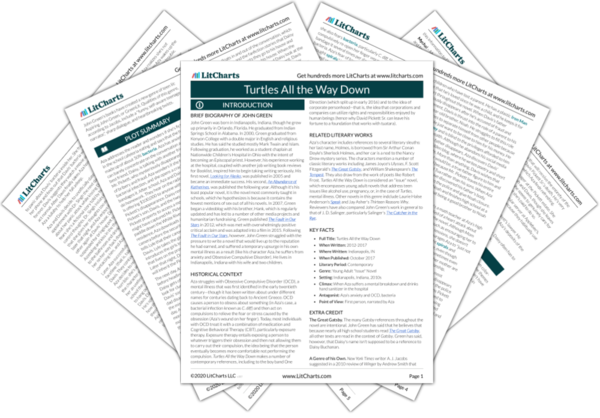This metaphor allows Aza to communicate to Daisy what inhabiting her mind is truly like: limitless, but scary
because it's limitless. When Aza says that there's power in being able to turn on the light, she's saying there's power in knowledge and control. This thematically ties back to Aza's medication, as the medication can be seen as a way for her to turn on the light. It allows her some control over her dark and worrying anxiety.
